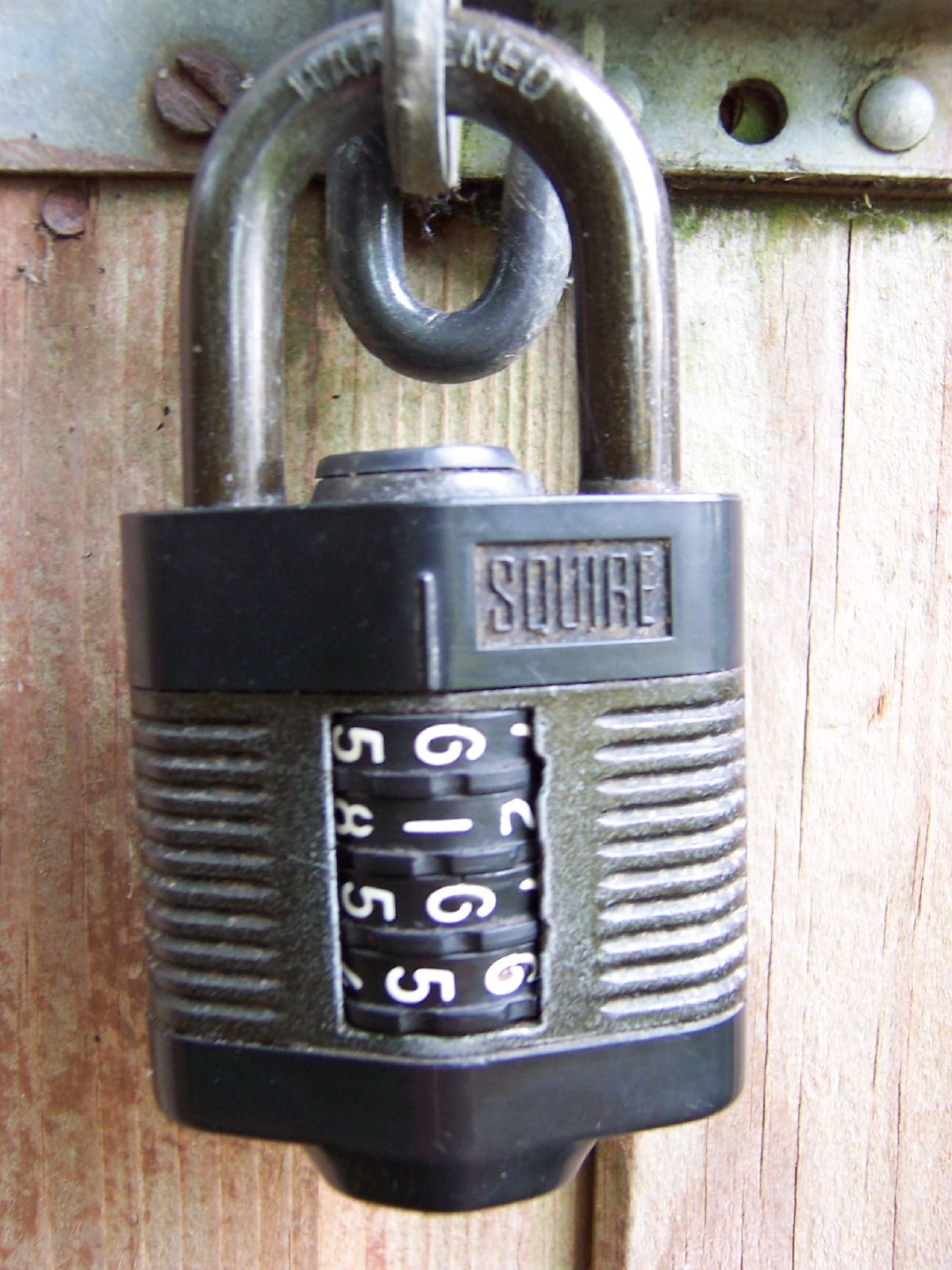Have you ever found yourself staring at a stubborn combination lock, with the secret combination seemingly lost in the depths of the universe? In a world filled with countless digital gadgets, the elegance and mystique of a good old-fashioned combination lock remain unparalleled. Whether you are attempting to unlock a forgotten gym locker or testing your sleuthing skills on an antique treasure chest, picking a combination lock is no longer a daunting task shrouded in mystery. In this step-by-step guide, we will unravel the secrets of the combination lock, equipping you with the knowledge and confidence to conquer any one that stands in your way. Prepare to embark on a journey of skillful manipulation, where you will discover the art of picking a combination lock and the exhilaration that comes with cracking the code.
Table of Contents
- Understanding Combination Locks
- Analyzing the Components of a Combination Lock
- Step-by-Step Instructions for Picking a Combination Lock
- Exploring Common Techniques for Opening Combination Locks
- Special Considerations and Helpful Tips for Picking Combination Locks
- Q&A
- The Conclusion

Understanding Combination Locks
Combination locks have been around for centuries, providing a reliable and secure way to protect personal belongings and secure various spaces. These locks operate on a simple principle – a specific sequence of numbers that must be entered to unlock and access what lies behind. Let’s delve deeper into the fascinating world of combination locks and unravel the secrets behind their functionality.
Components of a Combination Lock:
- The Dial: The circular rotating mechanism that is used to enter the combination.
- The Shackle: The U-shaped or curved metal piece that secures the lock.
- The Notches: Small gaps or indents on the wheel of the lock that align with the numbers of the combination.
How Combination Locks Work:
Combination locks typically consist of a series of wheels, each containing notches that correspond to the numbers of the combination. When the correct combination is entered, the wheels line up perfectly, aligning the notches in such a way that the lock can be opened. Each wheel has to be turned in the correct direction and to the correct number in the combination sequence for the lock to disengage and allow access.
Advantages of Combination Locks:
- Simplicity: Combination locks are straightforward to use, with no need for keys.
- Security: They offer a high level of security, as the combination can only be known by the lock owner.
- Durability: Combination locks are built to last with sturdy materials that can withstand wear and tear.

Analyzing the Components of a Combination Lock
Components of a Combination Lock
Let’s take a closer look at the fascinating world of combination locks and explore their intricate components. Every combination lock consists of several essential parts that work harmoniously to provide security and peace of mind.
Dial: The dial is the most visible and often the most distinctive part of a combination lock. It is the round disc featuring a series of numbers or letters and controls the lock’s mechanism when properly aligned.
Cam: The cam is a small, cylindrical piece that connects the dial and the lock’s shackle. When the correct combination is entered, the cam rotates, allowing the shackle to release and open the lock.
Driveshaft: Hidden beneath the dial, the driveshaft is the backbone of the combination lock. It transfers the motion created by rotating the dial to the cam, ultimately determining whether the lock will open or remain closed.
Spindle: The spindle serves as the central axis of a combination lock. It holds the driveshaft, allowing it to rotate freely with the movement of the dial.
Locking Mechanism: Depending on the specific design, combination locks may incorporate various locking mechanisms such as lever locks, disc detainer locks, or pin tumbler locks. These mechanisms engage when the correct combination is entered, preventing the shackle from being released without the combination being reset.
Understanding the components of a combination lock provides insight into the complexity and precision required for these devices to function properly. Next time you use a combination lock, take a moment to appreciate the clever engineering that safeguards your valuables or secures your belongings.

Step-by-Step Instructions for Picking a Combination Lock
Ready to crack that combination lock? Follow these step-by-step instructions and become a lock-picking expert!
Requirements:
- A combination lock
- Some patience
- A quiet and distraction-free environment
Instructions:
- Clear your mind and focus on the task at hand. Lock-picking requires concentration.
- Inspect the lock and identify the small arrow or line on the dial; this is crucial for our next steps.
- Turn the dial to the right (clockwise) three full rotations, passing the arrow or line for the first time.
- Once the arrow or line lines up with the starting point again, stop at the first number of your combination.
- Turn the dial to the left (counter clockwise). Pass the arrow or line once, then stop at the second number.
- Finally, turn the dial right (clockwise) directly to the third and final number of your combination.
- With the lock still set on the final number, apply gentle pressure to the shackle and slowly turn the dial in both directions. You’ll feel a slight resistance and hear a subtle click when the lock’s mechanism aligns.
- Once the lock opens, celebrate your newly acquired lock-picking skills!
Remember, lock-picking should only be done on locks that you own or have permission to practice on. Always use your newfound knowledge for lawful purposes!

Exploring Common Techniques for Opening Combination Locks
Combination locks are fascinating devices that rely on a specific sequence of numbers to unlock. Whether you’ve forgotten the combination to your locker, or simply have a curiosity about lock mechanisms, can be an intriguing endeavor. Here, we’ll delve into several methods that can help you crack the code and unlock the secret behind these clever devices.
1. “Brute-Force Method”: This technique involves trying every possible combination until you stumble upon the correct one. It’s time-consuming but can be effective if you have the patience. Remember, though, that some combination locks have built-in features that prevent this method from working.
2. “Listening to the Clicks”: Combination locks often emit distinct clicks when the correct numbers are dialed. By placing your ear close to the lock and carefully turning the dial, you can listen for these clicks and use them as a reference to determine the correct combination.
3. “Imprinting Method”: Another common technique involves making impressions on the lock. This can be done by using a graphite pencil to lightly shade the numbers on the dial, or by using a common household item like toothpaste or lipstick. As you dial the lock, any marks that stand out or are more heavily imprinted may indicate the correct combination.
Remember, it’s essential to ensure that you are using these techniques legally and ethically. Combination lock cracking should only be performed on locks that you have the legal authorization to access. So, whether you’re an aspiring lock enthusiast or simply looking to recover the code to your own lock, exploring these common techniques can provide some insight into the intriguing world of combination locks.
Special Considerations and Helpful Tips for Picking Combination Locks
When it comes to picking combination locks, a few special considerations can make all the difference. Whether you’ve forgotten your lock combination or simply want to test your skills, here are some helpful tips to keep in mind:
- Familiarize Yourself: Before attempting to pick a combination lock, take some time to understand its structure. Get to know the dial, the numbers, and any other mechanisms involved. By understanding how it works, you can increase your chances of successfully cracking the code.
- Start with the Basics: Begin by turning the dial several times clockwise to clear any previous attempts. Then, turn it counterclockwise until it feels tight. This is the starting point for your combination lock picking journey.
- Use a Light Touch: When applying pressure on the dial, use a light touch with your fingers. Applying too much pressure can lead to misalignments in the internal mechanism, making it harder to pick the lock. A delicate touch is key to maintaining control and precision.
- Listen for Clicks: As you turn the dial slowly, listen carefully for any clicks or subtle sounds. These can indicate that you’ve successfully aligned a part of the combination lock’s mechanism. Paying attention to these auditory cues can greatly increase your chances of unlocking the mystery.
Remember, picking combination locks can require practice and patience. Always ensure you have the owner’s permission before attempting to pick a lock and use this knowledge responsibly. With time and experience, you’ll become more skilled at this fascinating art.
Q&A
Q: Can you explain the basics of a combination lock?
A: Certainly! A combination lock is a security device with a series of dials or wheels that align to form a specific combination. By correctly aligning these numbers, letters, or symbols, the lock can be opened.
Q: How secure are combination locks?
A: Combination locks can typically offer a high level of security if correctly used and of good quality, as they do not rely on keys that can be misplaced or duplicated. However, no lock is entirely foolproof, and some advanced techniques can compromise their security.
Q: What tools do I need to pick a combination lock?
A: Picking a combination lock usually requires minimal tools. All you generally need is a small shim or a tension wrench, which can often be improvised using everyday objects, and your fingers to manipulate the lock’s mechanism.
Q: Is it illegal to pick a combination lock that I don’t own?
A: Yes, it is generally illegal to pick a combination lock that you do not own or have explicit permission to pick. Picking locks is considered tampering with someone else’s property, which can have legal consequences.
Q: What should I do if I forget the combination of my lock?
A: If you forget the combination to your lock, the best course of action is to consult the lock’s manufacturer or a locksmith. They may be able to provide assistance or guidance on how to reset the combination or gain access to the lock.
Q: Can I pick any type of combination lock using the same technique?
A: While the underlying principles of combination lock picking remain the same, different types of combination locks may require slightly varied techniques for successful picking. It is crucial to familiarize yourself with the specific lock model before attempting to pick it.
Q: Are there any alternative methods to picking a combination lock?
A: Yes, if you find yourself unable to pick a combination lock, you can explore alternative methods like shimming, decoding, or cutting. However, these techniques may damage or destroy the lock, so caution should be exercised and legal ramifications considered.
Q: Can picking a combination lock damage it?
A: Picking a combination lock using correct techniques should not cause damage. However, using excessive force or improper tools can potentially damage the lock’s internal mechanism or even render it unusable.
Q: Can I pick a combination lock without any prior experience?
A: Picking a combination lock can require some skill and patience, but with practice and proper guidance, it is possible for beginners to learn the technique. It is important to note, however, that attempting to pick locks you don’t own may be illegal and unethical.
The Conclusion
In a world where security plays an increasingly vital role in our everyday lives, knowing how to pick a combination lock can unlock a world of possibilities (no pun intended!). Throughout this step-by-step guide, we have delved into the art of combination lock picking, demystifying the process and empowering you with the skills to overcome the formidable barriers that stand in your way.
As we conclude this journey, we hope that you have not only acquired the necessary techniques but also a newfound sense of curiosity and fascination for the intricate mechanisms that safeguard our precious possessions. Remember, knowledge is power, and being equipped with the ability to bypass a combination lock may not only save you from an unfortunate predicament but also instill a sense of assurance and autonomy.
However, amidst all the excitement, it is important to recognize the responsibility that comes with this knowledge. Picking a combination lock should only be employed under appropriate circumstances and with utmost discretion. Respect the boundaries of legality, as this newfound skill should never infringe upon the rights and well-being of others.
So go forth, equipped with the know-how to maneuver the seemingly impregnable fortress of combination locks. But let it be a reminder that in our quest for personal security, we should always strive to strike a balance between self-sufficiency and respect for the systems that uphold our collective safety.
Remember, this guide serves as a comprehensive educational resource, shedding light on a subject that was once shrouded in mystery. We hope it has provided you with valuable insights and an appreciation for the intricate world of combination lock mechanisms. Now, armed with this knowledge, embark on your own unique explorations with an unwavering curiosity, always remaining ethically responsible.
May your endeavors be fruitful and your journey through the world of locks both educational and enlightening. Happy picking!
As an affiliate, my content may feature links to products I personally use and recommend. By taking action, like subscribing or making a purchase, you’ll be supporting my work and fueling my taco cravings at the same time. Win-win, right?
Want to read more? Check out our Affiliate Disclosure page.